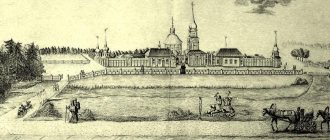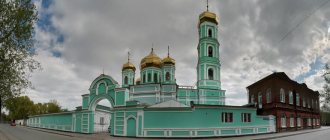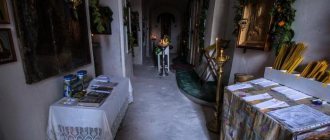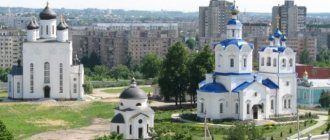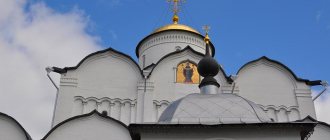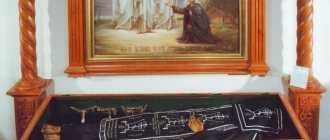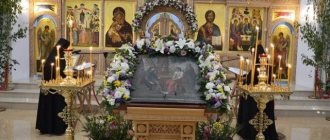Mir
Russia Kursk region village of Prigorodnyaya Slobodka Rylsky St. Nicholas Monastery Map is loading…
{"format":"leaflet","minzoom":false,"maxzoom":false,"limit":50,"offset":0,"link":"all","sort":[""], "order":[],"headers":"show","mainlabel":"","intro":"","outro":"","searchlabel":"\u2026 \u0441\u043b\u0435\ u0434\u0443\u044e\u0449\u0438\u0435 \u0440\u0435\u0437\u0443\u043b\u044c\u0442\u0430\u0442\u044b","default":"","import-annotation":false,"width ":"auto","height":"350px","centre":{"text":"","title":"""link":"""lat":51.5839390000000008740244084037840366363525390625,"lon": 34.6924149999999968940755934454500675201416015625,"icon":""},"title":"","label":"","icon":"","lines":[],"polygons":[],"circles":[ ],"rectangles":[],"copycoords":false,"static":false,"zoom":8,"defzoom":14,"layers":["OpenStreetMap"],"image layers":[] ,"overlays":[],"resizable":false,"fullscreen":true,"scrollwheelzoom":true,"cluster":false,"clustermaxzoom":9,"clusterzoomonclick":true,"clustermaxradius":80, "clusterspiderfy":true,"geojson":"","clicktarget":"","showtitle":true,"hidenamespace":false,"template":"","userparam":"","activeicon": "","pagelabel":false,"ajaxcoordproperty":"","ajaxquery":"","locations":[{"text":"\u003Cb\u003E\u003Ca href=\"/palomnik/%D0% A0%D1%8B%D0%BB%D1%8C%D1%81%D0%BA%D0%B8%D0%B9_%D0%A1%D0%B2%D1%8F%D1%82%D0%BE- %D0%9D%D0%B8%D0%BA%D0%BE%D0%BB%D0%B0%D0%B5%D0%B2%D1%81%D0%BA%D0%B8%D0%B9_%D0 %BC%D1%83%D0%B6%D1%81%D0%BA%D0%BE%D0%B9_%D0%BC%D0%BE%D0%BD%D0%B0%D1%81%D1%82 %D1%8B%D1%80%D1%8C\" title=\"\u0420\u044b\u043b\u044c\u0441\u043a\u0438\u0439 \u0421\u0432\u044f\u0442\u043e-\u041d\u0438\ u043a\u043e\u043b\u0430\u0435\u0432\u0441\u043a\u0438\u0439 \u043c\u0443\u0436\u0441\u043a\u043e\u0439 \u043c\u043e\u043d\u0 430\u0441\u0442\u044b\u0440\ u044c\u003E\u0420\u044b\u043b\u044c\u0441\u043a\u0438\u0439 \u0421\u0432\u044f\u0442\u043e-\u041d\u0438\u043a\u043e\u043b\ u0430\u0435\u0432\u0441 \u043a\u0438\u0439 \u043c\u0443\u0436\u0441\u043a\u043e\u0439\u043c\u043e\u043d\u0430\u0441\u0442\u044b\u0440\u044c\u003C/ a\u003E\u003C/b\u003E ""title":"\u0420\u044b\u043b\u044c\u0441\u043a\u0438\u0439 \u0421\u0432\u044f\u0442\u043e-\u041d\u0438\u043a\u043e\u043b\u0430\ u0435\u0432 " "link":"" lat":51.5839390000000008740244084037840366363525390625,"lon":34.6924149999999968940755934454500675201416015625,"icon":""}],"imageLayers" :[]}
51.584847; 34.686729
Russia, Kursk region, Rylsky district, Prigorodnyaya Slobodka village, Mirnaya street
Prigorodnyaya Slobodka village, Kursk region
Russia
Telephone.:
8(47152)2-31-31.
Email:
Rylsky St. Nicholas Monastery
- one of the oldest monasteries in Russia. It is located in the Kursk region, on a hill on the outskirts of the village of Prigorodnyaya Slobodka, on the opposite bank of the Rylo River from the city of Rylsk.
History[edit]
The exact date of foundation is unknown, the first mention in sources is 1505. During the Time of Troubles, the monastery was plundered by the Polish-Lithuanian army.
The first stone Church of the Exaltation of the Holy Cross was founded in 1733 and consecrated in 1783. The second stone Church of the Life-Giving Trinity was built in 1747, the third - the Church of St. Nicholas the Wonderworker - in 1757, which is now the cathedral church of the monastery. In the 1740s, a five-tier bell tower was erected, and at the same time a gate tower with a 2.5-ton bell was built, demolished in 1949.
In 1784, a theological school was opened, and in 1794 another temple was built - in honor of the Akhtyrka Icon of the Mother of God (demolished at the beginning of the 20th century). In 1820, the theological school became a four-year school, and in 1876 it moved to Rylsk. In 1824, Emperor Alexander I visited the monastery while passing through.
In the wake of the struggle against the church in the USSR in 1925, the monastery was closed. From October 5, 1941 to August 30, 1943, the monastery was occupied by the Nazi invaders.
On June 17, 1991, the monastery was returned to the Russian Orthodox Church, and already on October 16, 1991, services began in the St. Nicholas Church.
Description of the architecture
The monastery includes three large churches and a bell tower. Each building was built in the traditional Russian style and is an architectural monument. The main cathedral church is St. Nicholas, which was completely restored after Soviet decline and restored. Today, a daily cycle of services is held there.
Cathedral of St. Nicholas the Wonderworker, Rylsky St. Nicholas Monastery
The main church of the Nikolaevsky monastery was built in 1753, when the monks were led by Abbot Matthew. It was he who turned to the Moscow Spiritual Consistory with a request to begin construction. After permission, the monks erected a two-story building, which became the main and largest building in the courtyard. His style is a combination of Russian Baroque and Ukrainian.
Shrines[edit]
Reliquary 1:[edit]
- St. THEODOSIY Chernigovsky
- St. LAVRENTY Chernigovsky
- svschmch. Afanasy (Sakharov) bishop. Kavrovsky
- svschmch. NICHOLAY Rev. Iskrovsky
- prpmchch. ZVERINITSKY
- svschmch. SERGY the Rev. Vasilievsky
- martyr KIRILL Vasilievsky
- martyr PROKHOR Vasilievsky
- martyr BETHLEHEM from King Chozroes killed
- St. DEMITRY Metropolitan Rostovsky
- St. HILARION the recluse Troekurovsky
- svschmch. KONSTANTIN Bogorodsky
- St. FEOFAN the recluse Vyshensky
- St. SERAPHIM of Sarov
- Vmch. PANTELEMON Healer
- St. LUKA Spanish archbishop Simferopol
- Vmch. PARASKEVA Friday
- St. GABRIEL of Athos Odessa wonderworker
- St. ELENA Florovskaya
- particle from the tomb of St. NICHOLAS of Myra
- piece of the coffin of St. TIKHON of Zadonsky
- prpmch. ow. book ELIZAVETA
- St. SERGY Spanish Srebryansky
Kiev-Pechersk saints:[edit]
- svschmch. VLADIMIR Metropolitan of Kyiv
- St. FILARET Metropolitan of Kyiv
- St. THEOPHILI
- St. ZINON fasting
- St. Veniamin the recluse
- St. MERCURY fasting
- St. MACARIUS deacon
- St. AKHILA deacon
- St. MARTYRIUS deacon
- St. PAVEL Obedient
- St. ILLARION cm.
- St. MOSES the miracle worker
- St. THEODOR the silent
- St. LAVRENTIY the recluse
- St. Hypatius healer
- St. THEODOR book. Ostrogsky
- St. IGNATIUS Archimandrite
- St. SISOY cm.
- St. EUTHIMIUS hierarch.
- St. ARSENY Hardworking
- St. NESTOR Neknizhny
- St. GREGORY the wonderworker
- St. PIMEN fasting
- St. JOSEPH The Many Painful
- St. SILUAN hmm.
- St. PAISIY
- St. LONGIN goalkeeper Hardworking
- St. TIT warrior
- St. ZACHARIUS the faster
- St. AGAFON
- St. youth LEONTIUS canonarch
- St. youth GERONTIUS canonarch
- St. NESTOR the Chronicler
- St. SAVVA God-pleasing
- St. JOHN brother of Theophilus
- St. ABRAHAMIH Hardworking
- St. PIMEN Multi-painful
- St. THEODOT
Reliquary 2:[edit]
- svschmch. IGNATIUS the God-Bearer
- mts. TATIANA
- St. BASILY the Great
- St. SAVVA Serbian
- St. ANTONY the Great
- St. Sergius of Radonezh
- St. JOB ig. Pochaevsky
- St. NIKODIM Karulsky
- St. Afanasy Karulsky
- blg. book KONSTANTIN Muromsky
- piece of Mamri oak
- stone from Gornaya from the birthplace of JOHN the Baptist
- particle of the handrails of St. right John of Kronstadt
Optina saints:[edit]
- St. A LION
- St. MAKARIUS
- St. MOSES
- St. ANTHONY
- St. HILARION
- St. AMBROSIY
- St. ANATOLY Sr.
- St. ISAAC
- St. JOSEPH
- St. VARSONOPHIUS
- St. ANATOLY Jr.
- St. NECTARIUS
Glinsk saints:[edit]
- St. INNOCENT
- St. ILIODOR
- St. JOHNNIKIUS
- St. SERAPHIM (Amelin)
- St. FILARET
- St. BASIL
- St. MAKARIUS
- St. ARCHIP
Ryazan saints:[edit]
- svschmch. MISAIL Archbishop. Ryazansky and Shatsky
- St. THEODORIT, archbishop. Ryazan and Murom
- St. GABRIEL Archbishop Ryazan and Zaraisky
- St. MELETIUS Bishop Ryazan and Zaraisky
Vladimir saints:[edit]
- St. HERMAN Zosimovsky
- St. ALEXIY the recluse Zosimovsky
- St. ZOSIMA desert dweller
Cross with particles of St. relics and other shrines:[edit]
- ap. and Evang. MATTHEW
- ap. ANDREW the First-Called
- first hour archdeacon STEFAN
- Vmch. PANTELEMON the Healer
- Vmch. GEORGE the Victorious
- Vmch. DEMITRIY of Thessalonica Myrrh-Streaming
- Vmch. THEODORA Stratilata
- VMC. BARBARIANS
- mchch. and Besser. COSMAS and DAMIAN, CYRUS and JOHN
- St. NICHOLAS Archbishop World of the Lycian Wonderworker
- St. PETRA Metropolitan Moscow
- St. LEONTIA Bishop Rostovsky
- svtt. GURIA and VARSONOPHIYA of Kazan
- St. MACARIA Uzhnensky
- Vlasa St. THEODORA of Alexandria
- stone from St. Mount of Olives
- a piece from the Throne, where the Lord fasted
Activities of the parish
The abbot of the monastery at this time is Abbot Pankraty, who leads the brethren. The monastery leads an active novitiate life - there are up to 25 brothers who constantly look after the territory, perform services and carry out duties in the courtyard.
Pilgrims can arrive and take part in any of the services performed, which occur on a regular schedule and make up the daily cycle of services:
- On weekdays: Midnight Office at 6 am, Divine Liturgy at 7 am, Vespers at 5 pm, as well as Compline and evening prayers.
- On Sundays: midnight office at 7 am, prayer service with blessing of water at 7:30 am (solemn akathists are read to St. Nicholas the Wonderworker and St. John of Rylsky), Divine Liturgy at 8:30 am.
- On holidays, the Midnight Office is read at 7 am along with the canons and akathists, and the Divine Liturgy begins at 8 am.
Divine service at the Rila St. Nicholas Monastery
In addition to divine services, the monastery also runs a private household, which allows the monks to exist independently of external sources. For this purpose, several hermitages have been equipped in the surrounding villages:
- Nikolsky;
- Uspensky;
- Pokrovsky;
- Skete in the village of Timokhino;
- Skete of the Nativity of Christ.
In the hermitages, the monks grow the necessary vegetables and fruits for food, and also keep a small animal farm. Usually from 2 to 6 monks live in hermitages. The brethren are also involved in cultivating the monastery's land - up to 950 hectares of land are cultivated annually, on which buckwheat, soybeans, grain crops and vegetables are grown.
In addition to economic and liturgical activities, the monastery carries out educational work among the local population, paying especially great attention to the education of youth. The clergy regularly conduct seminars and talks for schoolchildren and teachers, publish educational literature, organize photo competitions, intellectual games and holidays for the population.
On a note! The brethren are ready to host up to 150 people overnight at the monastery, so pilgrims can come for evening services and stay until the morning, spending a day or more within the walls of the monastery. At the same time, the brethren feed and accommodate everyone by prior agreement, which is why you need to contact the monastery in advance.
Pilgrimage
There are more and more pilgrims every year
Devoted friends of the monastery come and go from various places, and those who have heard reviews about it, who have just found the way to it and made this wonderful discovery for themselves, are also coming.
It's not just Russians. It is difficult to say how many languages the pilgrims who come here speak.
And here their souls are filled with joy, peace and tranquility. And already at home, somewhere in Prague or Minsk, or a remote Russian village, the desire to return here more than once does not leave you, so that your soul, exhausted by passions, can rest again.
To drink the waters of healing springs: the Mother of God, St. Nicholas, St. John of Rila, in order to receive deliverance from various ailments of the body and soul, or to collect healing clay nearby.
About the glorious city of Rylsk
View of the city of Rylsk
This place, where two rivers, Seim and Rylo, merge into one, where the city of Rylsk flaunts today, was inhabited by our ancestors already in ancient times. And a lot of evidence of this has been found. About fifty burial mounds belonging to pagan northerners were found on the lands of the monastery complex alone, and there are countless numbers of them in the area.
With Prince Igor, the army of this capital princely city, which became Rylsk, which was a border fortress until 1180, rose to battle with the enemy. That campaign is described in “The Tale of Igor’s Campaign.”
The location chosen for construction is quite picturesque. Wherever you look, there is beauty everywhere: these are water meadows along the Volynka River, oak groves on the plain, and the white slopes of the Viskola Mountains.
According to the legends of the times when Olga, Svyatoslav and Vladimir reigned, this blessed place became a torch of Orthodoxy. It came to these, then still pagan, lands from Bulgaria, when, after its fall, the Bulgarian monks found refuge here and founded a temple for the glory of John of Rila, their heavenly patron. They brought the right hand of his incorruptible relics to Rus'.
This is interesting: the settlement got its name from the temple - Rylsk, and the local river - Rylo. So, since the 14th century this saint has been revered in Rus'.
Saint John of Rylsky himself, as the chronicle testifies, helped the city more than once in dangerous times. He saved Batu from a pogrom in 1240, and in 1502 he helped in the confrontation with the Golden Horde Khan Akhmet.
We also advise you to familiarize yourself with the history and description of the Church of St. Nicholas the Pleasant in Khamovniki.
Return
Revived shrine of the Kursk Diocese
This happened in 1991, when the monastery came under the control of the Kursk Diocese. Nowadays it belongs to the monasteries of the Kursk Metropolis.
Ten years later, it has already become the focus of the spiritual life of the region and all of Russia. The righteous labors and prayers of the Orthodox raised the monastery from ruins and allowed it to become that very beacon that illuminated the path for all souls, crippled and suffering.
From all over Russia, from its near and far outskirts, who believes and does not believe, people flocked to the Rylsk shrine. There were thousands of them. An intelligible word, prayer, love and consolation transformed the morality of many of those who until recently were far from the faith and the Church.
Today, the revived complex is no longer threatened by anything. The fresh colors of the new domes and copper roofs give it a vibrant look. The monks have a large farm, and it also requires a lot of care: they cultivate the land, develop vegetable gardens and keep livestock.
Gasification contributed to the improvement of economic conditions and made it possible to heat churches. A hotel specially equipped for numerous pilgrims appeared.
Both demands and deductions are performed here - this is a special prayer service for the health of the sick, and all other services that the monastery is supposed to serve. The schedule of services can be found on the monastery website. It also shows how to get to the monastery by train, bus and car.
